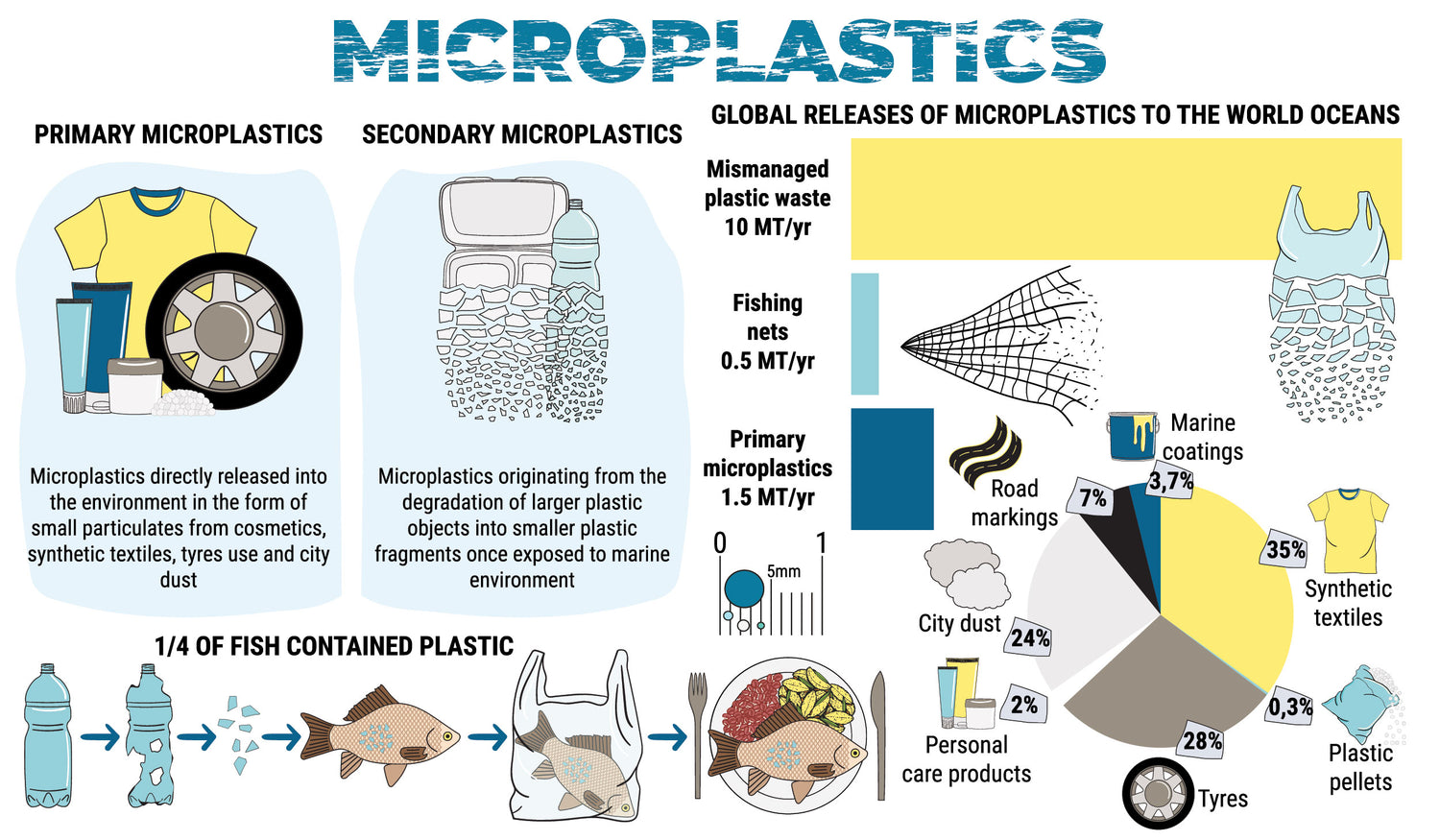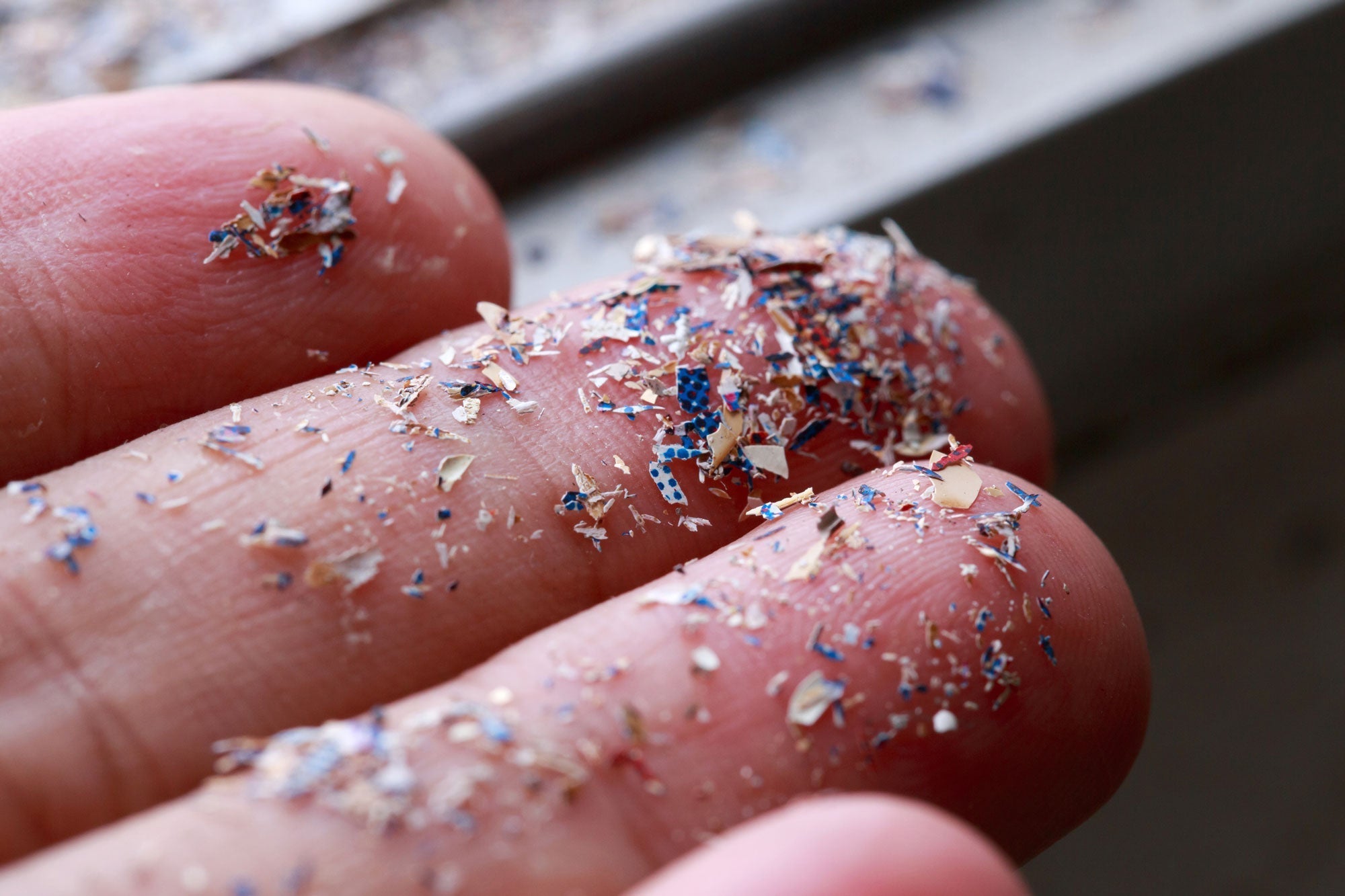Microplastics, fragments of plastic smaller than 5 millimeters, have become a pressing environmental and health concern. This article provides an in-depth analysis of the causes, risks, and mitigation strategies of microplastics, with a focus on their impact on ecosystems and human health, particularly their role as endocrine disruptors. We'll explore the challenges and trade-offs in addressing microplastic pollution, aiming to inform and engage readers interested in environmental sustainability.
What Causes Microplastics?
Microplastics originate from two main sources: primary and secondary. Primary microplastics are manufactured small, such as microbeads in exfoliants or pellets used in industrial processes. Secondary microplastics result from the breakdown of larger plastics due to environmental factors like sunlight, wave action, and physical abrasion. Everyday items, including synthetic textiles, tires, and cosmetics, contribute significantly to microplastic pollution [1].
Risks of Microplastics:
The environmental impact of microplastics is vast and multifaceted. These particles accumulate in marine and freshwater ecosystems, affecting over 114 aquatic species. The ingestion of microplastics leads to reduced food intake, suffocation, and potential neurological and reproductive toxicity in wildlife [1].
For humans, microplastics pose a significant risk as endocrine disruptors. These substances interfere with the body's hormone systems, potentially leading to developmental, reproductive, neurological, and immune disorders. Microplastics can carry and release harmful chemicals, like bisphenol A (BPA), which are known to have endocrine-disrupting properties [2].
Mitigating Microplastic Pollution:
Reducing microplastic pollution involves several strategies, each with its own challenges and trade-offs:
- Reducing Consumption: Opting for products with less plastic and avoiding single-use plastics are effective strategies. However, this requires consumer awareness and changes in lifestyle, which can be challenging to implement on a global scale.
- Innovative Materials: Developing biodegradable or bioassimilable materials can significantly reduce microplastic pollution. Yet, these materials may have other environmental impacts, such as increased water usage or reduced durability.
- Recycling and Waste Management: Improving recycling and waste management systems can reduce the amount of plastic entering the environment. However, the effectiveness of recycling is often limited by the quality of the waste management infrastructure and consumer participation.
- Legislation and Policy: Policies like banning microbeads in cosmetics or incentivizing sustainable packaging can be effective. However, enforcing these policies requires international cooperation and can be met with resistance from industries reliant on plastic.
The Importance of Holistic Impact Consideration:
When making decisions about microplastics, it's crucial to consider the holistic impact on ecosystems and human health. This means weighing the benefits of plastic usage against its environmental and health costs, and exploring solutions that offer the best balance.
Conclusion:
Microplastics are a complex environmental issue, posing significant risks to ecosystems and human health. Addressing this challenge requires a multifaceted approach, combining consumer behavior changes, innovative materials, effective waste management, and supportive policies. By understanding the causes, risks, and mitigation strategies, we can make informed decisions that minimize the impact of microplastics on our planet and ourselves.



Leave a comment
This site is protected by hCaptcha and the hCaptcha Privacy Policy and Terms of Service apply.